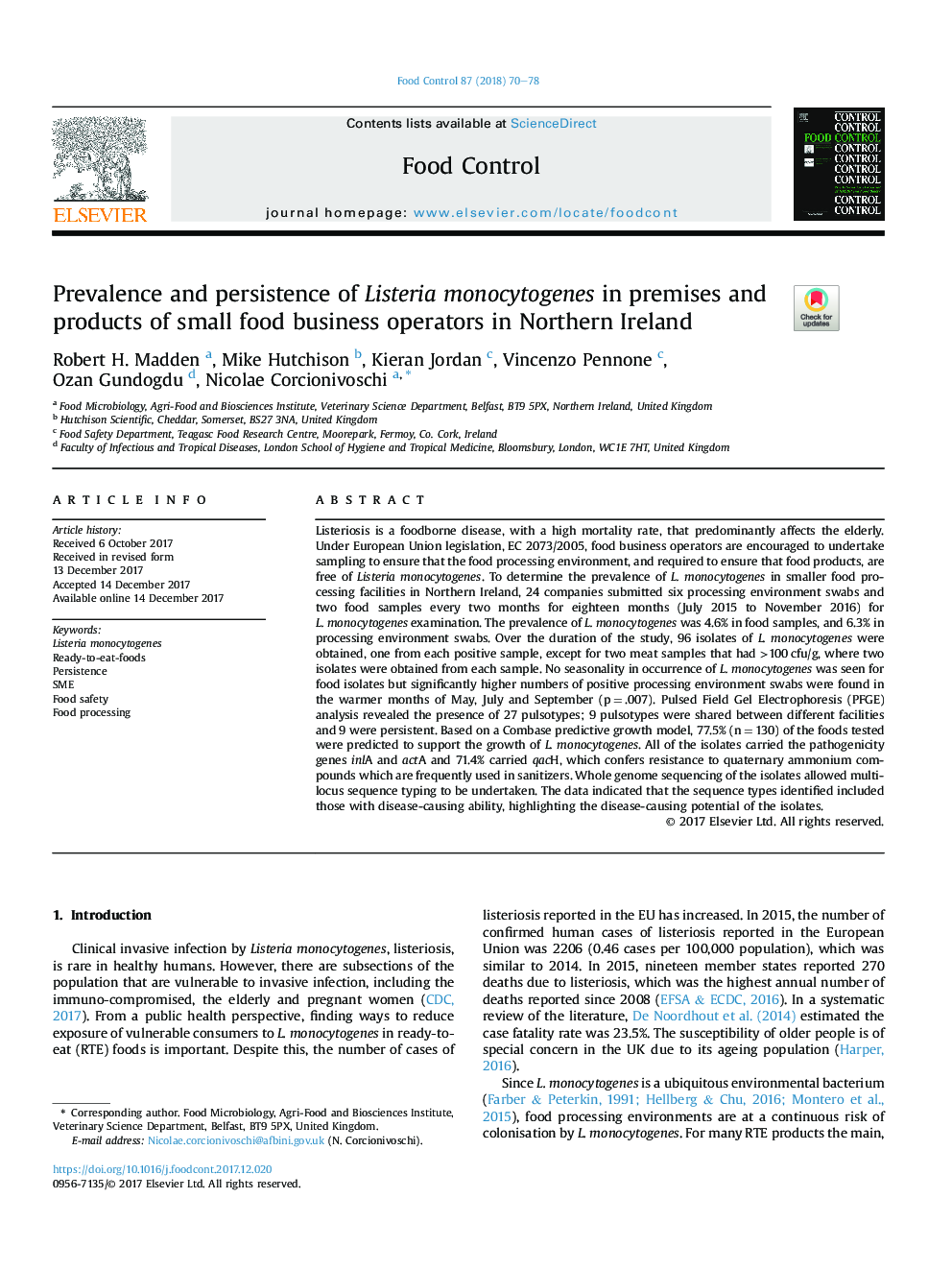| کد مقاله | کد نشریه | سال انتشار | مقاله انگلیسی | نسخه تمام متن |
|---|---|---|---|---|
| 8888066 | 1628377 | 2018 | 9 صفحه PDF | دانلود رایگان |
عنوان انگلیسی مقاله ISI
Prevalence and persistence of Listeria monocytogenes in premises and products of small food business operators in Northern Ireland
ترجمه فارسی عنوان
شیوع و تداوم لیستریا مونو سیتوژنز در محل و محصولات اپراتورهای تجاری کوچک در ایرلند
دانلود مقاله + سفارش ترجمه
دانلود مقاله ISI انگلیسی
رایگان برای ایرانیان
کلمات کلیدی
موضوعات مرتبط
علوم زیستی و بیوفناوری
علوم کشاورزی و بیولوژیک
دانش تغذیه
چکیده انگلیسی
Listeriosis is a foodborne disease, with a high mortality rate, that predominantly affects the elderly. Under European Union legislation, EC 2073/2005, food business operators are encouraged to undertake sampling to ensure that the food processing environment, and required to ensure that food products, are free of Listeria monocytogenes. To determine the prevalence of L. monocytogenes in smaller food processing facilities in Northern Ireland, 24 companies submitted six processing environment swabs and two food samples every two months for eighteen months (July 2015 to November 2016) for L. monocytogenes examination. The prevalence of L. monocytogenes was 4.6% in food samples, and 6.3% in processing environment swabs. Over the duration of the study, 96 isolates of L. monocytogenes were obtained, one from each positive sample, except for two meat samples that had >100â¯cfu/g, where two isolates were obtained from each sample. No seasonality in occurrence of L. monocytogenes was seen for food isolates but significantly higher numbers of positive processing environment swabs were found in the warmer months of May, July and September (pâ¯=â¯.007). Pulsed Field Gel Electrophoresis (PFGE) analysis revealed the presence of 27 pulsotypes; 9 pulsotypes were shared between different facilities and 9 were persistent. Based on a Combase predictive growth model, 77.5% (nâ¯=â¯130) of the foods tested were predicted to support the growth of L. monocytogenes. All of the isolates carried the pathogenicity genes inlA and actA and 71.4% carried qacH, which confers resistance to quaternary ammonium compounds which are frequently used in sanitizers. Whole genome sequencing of the isolates allowed multi-locus sequence typing to be undertaken. The data indicated that the sequence types identified included those with disease-causing ability, highlighting the disease-causing potential of the isolates.
ناشر
Database: Elsevier - ScienceDirect (ساینس دایرکت)
Journal: Food Control - Volume 87, May 2018, Pages 70-78
Journal: Food Control - Volume 87, May 2018, Pages 70-78
نویسندگان
Robert H. Madden, Mike Hutchison, Kieran Jordan, Vincenzo Pennone, Ozan Gundogdu, Nicolae Corcionivoschi,
